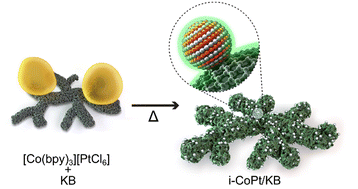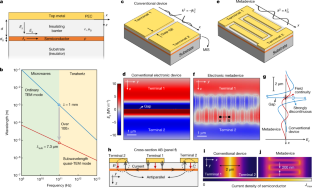熱処理による白金系合金ナノ粒子合成のためのシンプルかつ創造的なアプローチ 熱処理による白金系合金ナノ粒子の合成 Simple and creative approach for the synthesis of platinum-based alloy nanoparticles through heat treatment
2023-02-17 韓国基礎科学研究院(IBS)
◆しかし、白金は1kgあたり3万円程度と高価なため、燃料電池用触媒は高価格になるという大きな制約があった。また、高性能な触媒の製造方法も複雑で、多くの制限がありました。そのため、白金系燃料電池触媒の簡便かつスケーラブルな製造方法の開発は、白金使用量を抑えながら触媒性能と安定性を高めることと合わせて、喫緊の課題となっています。
◆そこで、韓国基礎科学研究所(IBS)ナノ粒子研究センターのSUNG Yung-Eun教授とHYEON Taeghwan教授らの研究チームは、ナノ触媒の新しい製造方法を発見した。研究者らは、簡単な熱処理によって、大きさが均一な(3~4ナノメートル)コバルト-白金(Co-Pt)合金ナノ粒子を製造できることを実証した。この方法は、含浸法の合成の容易さと、コロイド法のようなナノ結晶のサイズと形状の精密な制御という特徴を併せ持っている。
◆CNR-IBSの研究チームが開発した新しいCo-Pt合金ナノ触媒は、2つの逆帯電金属錯体、具体的にはCoとPtイオンがそれぞれビピリジンと塩素配位子で取り囲まれたものである。研究チームは、簡単な熱処理によってビピリジン配位子が熱分解し、成長中のCo-Pt合金ナノ粒子を保護する炭素シェルになるのではと仮定した。熱処理条件を最適化した結果、3〜4ナノメートルのナノ粒子からなる均一性の高いナノ触媒を得ることに成功した。
◆今回開発したナノ触媒では、Co原子とPt原子が「金属間化合物相」と呼ばれる規則正しい配列をしており、不安定なCo原子が周囲のPt原子によって安定化されていることが確認された。さらに、炭素担体に窒素を効果的にドープすると、燃料電池の触媒層全体にアイオノマー(プロトン伝導体)が均一に分散し、Co-Ptナノ触媒の表面への酸素ガスの供給がより容易になることも確認された。
<関連情報>
- https://www.ibs.re.kr/cop/bbs/BBSMSTR_000000000738/selectBoardArticle.do?nttId=22529&pageIndex=1&searchCnd=&searchWrd=
- https://pubs.rsc.org/en/content/articlelanding/2023/ee/d2ee04211h
高出力型プロトン交換膜燃料電池のための金属間化合物白金-コバルト電極触媒のスケーラブルな製造方法 Scalable production of an intermetallic Pt–Co electrocatalyst for high-power proton-exchange-membrane fuel cells
Tae Yong Yoo, Jongmin Lee, Sungjun Kim, Min Her, Shin-Yeong Kim, Young-Hoon Lee, Heejong Shin, Hyunsun Jeong, Arun Kumar Sinha, Sung-Pyo Cho, Yung-Eun Sung and Taeghwan Hyeon
Energy&Environmental Science Published:30 Jan 2023
DOI:https://doi.org/10.1039/D2EE04211H
Abstract
Power performance is the primary bottleneck to the industrial application of proton-exchange-membrane fuel cells, which hinges on catalytic activity, oxygen mass transfer, and proton conduction at the cathode catalyst layer. Tackling all these critical factors requires a holistic design of catalyst, embodied by an elaborate synthesis. Here we present a straightforward synthetic approach to address these practical issues. A bimetallic compound, formulated as [Co(2,2′-bipyridine)3][PtCl6], thermally decomposes and produces carbon-protected sub-5 nm-sized intermetallic Pt–Co nanoparticles, on which compressively-strained and rigid Pt-skin can be formed. In addition to the high intrinsic activity, we achieved the combined features of high electrochemical surface area, N-doping on the mesoporous carbon support, and highly stabilized Co that could promote oxygen mass transfer and proton conduction. In the single cell configuration, the catalyst achieved unprecedented rated power densities of 1.18 W cm−2 and 5.9 W mgPt−1 at 0.67 V (with a cathode loading of 0.1 mgPt cm−2), while experiencing voltage loss of only 29 mV (at 0.8 A cm−2) at the end of the test.




